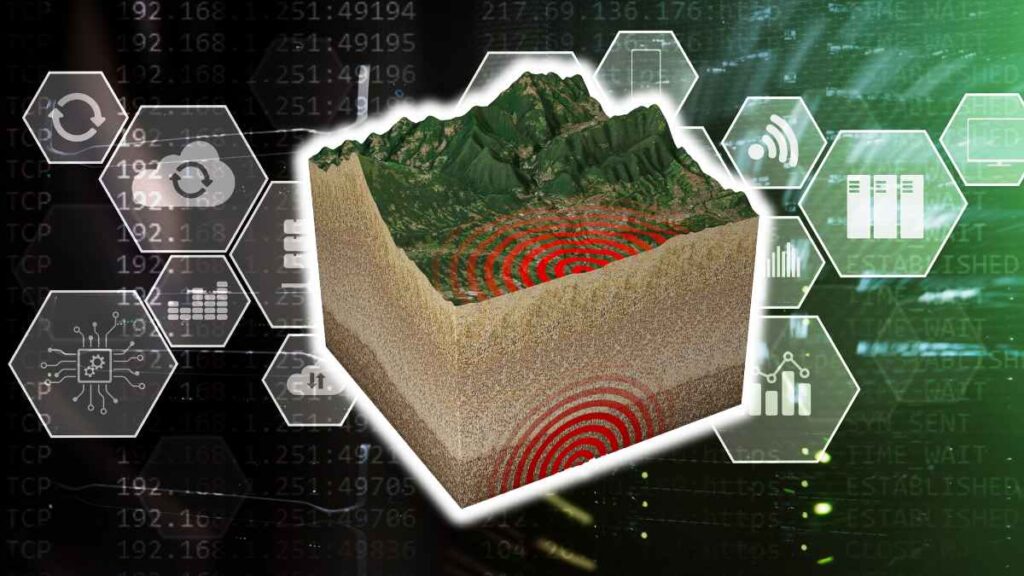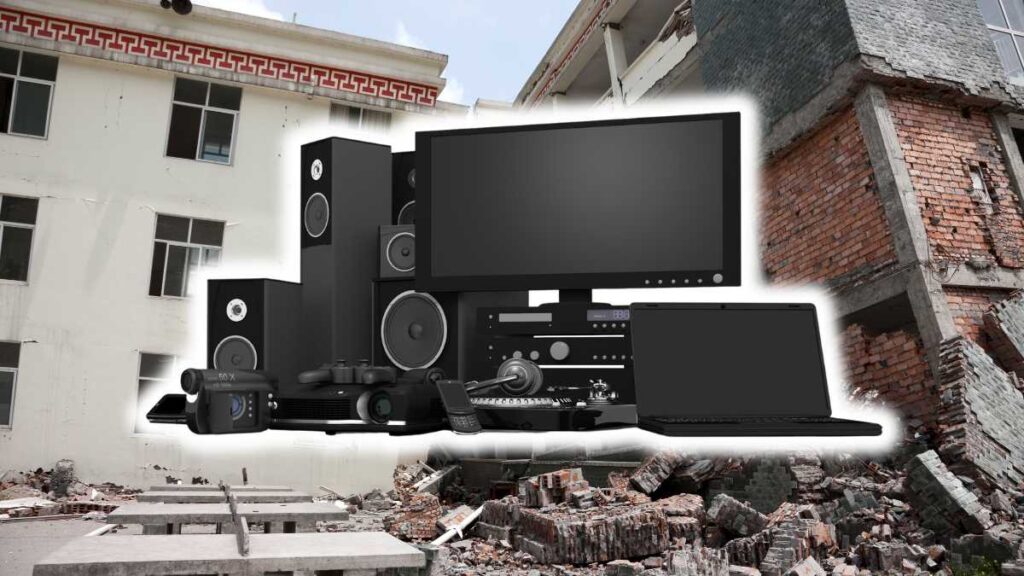Earthquakes are natural phenomena that can unleash devastating impacts in mere seconds. The threat of earthquakes is ever-present for countries and regions located along fault lines or within seismic zones. It’s paramount for these areas to adopt measures that safeguard infrastructure and, most importantly, human lives. One of the most critical preventive mechanisms in this context is the implementation of effective building codes.
Contents
Toggle1. What are Building Codes?
Building codes have been a part of human civilization’s architectural journey for centuries. As societies recognized the need for safe and efficient structures, they began implementing rules to ensure just that. Let’s delve deeper into these codes’ history, composition, and global importance.
1.1 Historical Background of Building Codes
Ancient Civilizations: The concept of building regulations can be traced back to ancient civilizations. One of the earliest examples is the Code of Hammurabi from around 1754 BCE, which stipulated that builders would face penalties if their constructions failed and caused loss of life or property.
Modern Evolution: In the aftermath of major urban fires, such as the Great Chicago Fire of 1871 and the San Francisco Earthquake of 1906, there was a marked drive towards modernizing and standardizing building codes. These tragedies illuminated the necessity of stringent regulations to prevent future calamities.
1.2 Global Importance
International Consensus: Recognizing the universal need for safe construction practices, organizations like the International Code Council (ICC) have developed international standards, such as the International Building Code (IBC), which many countries adapt and adopt.
Addressing Local Needs: Different regions have specific requirements based on climate, geology, and cultural factors. For instance, the seismic codes in California are rigorous due to their location on the Pacific Ring of Fire, whereas Florida emphasizes hurricane-resistant construction.
RELATED: 10 things not to do during an earthquake if you stay in a high-rise building like a condominium
2. Why are Earthquake Building Codes Important?
The ground beneath our feet, which we often regard as steadfast, can be volatile and unpredictable. In regions prone to seismic activity, ensuring that buildings can withstand an earthquake’s power is paramount. Let’s investigate why earthquake building codes are crucial in modern infrastructure.
2.1 Safeguarding Lives
Historical Context: Time and again, history has shown the tragic consequences of inadequate building standards. The 2010 Haiti earthquake, for instance, led to the deaths of over 230,000 people, many of whom perished due to poorly constructed buildings.
Human Aspect: Beyond the sheer numbers, each life lost has a profound ripple effect on families, communities, and societies. The psychological trauma following the loss of homes and loved ones can last for generations.
Building Resilience: Seismic codes focus on creating structures that avoid collapsing and provide safe exit routes, ensuring that occupants can escape unharmed.
2.2 Economic Considerations
Direct Costs: The immediate aftermath of an earthquake sees a surge in costs related to search and rescue operations, medical treatments, and temporary shelters.
Indirect Costs: There’s a long-term economic impact beyond the immediate damage. Businesses may be shuttered for months, tourism can plummet, and investments might be diverted to recovery rather than growth.
Insurance Implications: In regions with stringent building codes, insurance premiums for structures can be lower due to their reduced risk.
2.3 Promoting Sustainable Development
Resource Efficiency: A collapsed building means wasting all the resources – material, labor, and energy – that went into its construction. Ensuring structures are durable reduces resource consumption in the long run.
Community Resilience: Strong infrastructure can help communities bounce back faster post-disasters. If built to seismic codes, schools, hospitals, and public buildings can quickly transition from day-to-day functions to emergency response centers.
Eco-Friendly Solutions: Many modern seismic solutions, like tuned mass dampers, while ensuring safety, also contribute to a building’s energy efficiency.
2.4 Encouraging Innovative Designs
Pushing Boundaries: Seismic challenges often force designers to think outside the box. This has led to the birth of groundbreaking architectural marvels that are both safe and aesthetically appealing.
Technological Innovations: Developments like base isolators, which allow buildings to move independently of ground motion, or shape memory alloys that return to their original shape post-deformation, are direct outcomes of the need for earthquake-resilient structures.
Integration with Tradition: In some regions, ancient construction techniques that were inherently earthquake-resistant are being integrated with modern designs, marrying tradition with innovation.
RELATED:
3. Why Ordinary People Should Care About Building Codes
Building codes seem like tedious regulations best left to architects, engineers, and city planners. Yet, these codes have profound implications for ordinary people – homeowners, renters, and even casual visitors. Here’s why every individual should care about them:
3.1 Personal Safety and Peace of Mind
Building codes ensure that the structures we live in, work at, or visit are safe. They are designed to protect against common hazards, including fires, earthquakes, and structural failures.
Knowing that your home or workplace adheres to these codes can offer peace of mind that you and your loved ones are protected against unforeseen calamities.
3.2 Financial Security
A building constructed to code is less likely to face significant repair costs after a disaster. For homeowners, this means potential savings in repairs and insurance premiums.
For renters, buildings up to code can mean fewer disruptions due to emergency maintenance or relocations.
3.3 Community Resilience
In the wake of disasters, buildings that withstand the initial impact can serve as community hubs, providing shelter and resources.
Building codes also promote broader community resilience by reducing the overall impact of a disaster, ensuring quicker recovery and less strain on local resources.
3.4 Property Value and Investments
Properties built or retrofitted to current codes tend to have higher resale values because they promise longevity and safety.
For those considering investments in real estate, understanding building codes ensures informed decisions and minimizes potential risks.
3.5 Environmental Stewardship
Modern building codes often incorporate environmental and energy efficiency standards, reducing energy consumption and a smaller carbon footprint.
Individuals contribute to a more sustainable and eco-friendly community by supporting and understanding these codes.
3.6 Empowerment and Advocacy
By understanding building codes, ordinary people can hold developers, landlords, and local authorities accountable, ensuring safety and quality aren’t compromised.
It also empowers residents to advocate for updates in local codes, reflecting new research or shifting environmental challenges.
3.7 Heritage and Aesthetics
Building codes often encompass standards that preserve historical landmarks and maintain the aesthetic character of neighborhoods.
This ensures that development, while modern and safe, remains in harmony with a place’s cultural and historical identity.
4. Key Components of Seismic Building Codes
Understanding the intricacies of seismic building codes is crucial for anyone involved in the construction sector in earthquake-prone regions. Each of the following components serves as a pillar in creating structures that can withstand nature’s fury.
4.1 Site Classification
Geotechnical Surveys: Before any construction begins, detailed geotechnical studies are undertaken to understand the soil and rock properties of the site. This often involves drilling boreholes and analyzing soil samples.
Soil Behavior: Some soils, like clay, can amplify seismic waves, leading to more intense shaking. Conversely, bedrock often offers more stability during tremors.
Liquefaction Potential: Areas with water-saturated sandy soils are prone to liquefaction during an earthquake, where the ground momentarily loses its strength and acts like a liquid. Identifying such zones is vital to prevent catastrophic building failures.
4.2 Building Classification
Usage Classification: This categorizes buildings based on their function – residential, commercial, industrial, or special structures like hospitals and schools.
Importance Factor: Due to their societal role, some buildings are given an ‘importance factor’ which may necessitate stricter design criteria. Fire stations, for instance, need to remain operational post-earthquake to handle emergencies.
Seismic Performance Level: Depending on the classification, a building might be designed to safeguard human life (allowing for economical repair post-quake) or to remain fully operational post-event.
4.3 Seismic Design Criteria
Base Shear Calculation: This is a fundamental step where engineers calculate the lateral (horizontal) seismic force a building might encounter.
Response Spectrum Analysis: Engineers use this to evaluate how different frequency vibrations (from an earthquake) might affect a building.
Ductility Considerations: A building’s ability to deform without breaking (like bending a paperclip) is crucial during earthquakes. Design criteria often focus on ensuring structures have adequate flexibility.
4.4 Material Specifications
Concrete and Rebar: The quality and grade of concrete and the type and placement of reinforcing steel bars (rebar) are detailed to ensure optimal strength and flexibility.
Masonry Standards: Brick or stone masonry can be vulnerable during quakes. Specific ties, reinforcements, and mortar mixes are prescribed to enhance masonry’s seismic performance.
Wooden Frames: In regions where wood is a primary construction material, guidelines specify the type, size, and connection methods to ensure the structure can sway without collapsing during a quake.
4.5 Regular Inspections
Initial Construction Inspections: During construction, multiple inspections ensure the building complies with seismic codes, from foundational work to final finishing.
Retrofit Assessments: Older structures built before modern codes often undergo inspections to determine if they need retrofitting to improve earthquake resistance.
Post-Event Evaluations: After a significant seismic event, inspections assess the integrity of structures, even if no visible damage is apparent.
RELATED: Should you inspect your house after an earthquake? Ultimate guide
5. Challenges in Implementing Building Codes
Drafting building codes, especially those related to earthquake safety, is a rigorous process. However, the chasm between policy creation and actual implementation can be vast. Here’s a deeper look at the challenges faced:
5.1 Enforcement
Institutional Weaknesses: In some regions, the agencies responsible for oversight may lack the necessary manpower, expertise, or equipment to monitor compliance effectively.
Corruption: In places with high levels of corruption, builders may bribe officials to overlook non-compliance, putting occupants and the public at risk.
Decentralized Systems: In countries with decentralized governance, regional or local authorities may have different standards or levels of enforcement, leading to inconsistencies.
Rapid Urbanization: In cities experiencing rapid growth, illegal or hastily built constructions may sprout up faster than they can be monitored.
5.2 Economic Impediments
Short-Term View: While earthquake-resistant designs may prove cost-effective in the long run (by preventing reconstruction costs after a quake), the upfront costs can deter builders, especially those eyeing short-term profits.
Resource Scarcity: Certain construction materials or techniques recommended by codes may be scarce or expensive in specific regions, making compliance challenging.
Cost-Benefit Miscalculation: There might be a perception, especially in areas that have yet to experience recent earthquakes, that the probability of a seismic event is low, leading stakeholders to underestimate the benefits of compliance.
5.3 Public Awareness
Lack of Education: In many regions, the populace might need to be educated about the seismic risks inherent to their location or the construction practices that can mitigate them.
Cultural Barriers: Sometimes, local customs and traditions in building practices conflict with modern building codes. Convincing communities to change age-old methods requires sensitivity and tact.
Information Dissemination: In countries with vast rural landscapes or those lacking robust communication infrastructures, disseminating information about building codes and the importance of earthquake resistance can be an uphill task.
Complacency Post-Disaster: Oddly, areas that have recently experienced an earthquake might become complacent, thinking that another one is unlikely to occur soon, leading to a lax attitude towards building codes.
5.4 Additional Challenges
Retrofitting Older Structures: While new constructions can be built to code, older structures pose a challenge. Retrofitting them to meet modern standards can be technically challenging and expensive.
Political Will: Effective implementation often requires strong political will. In its absence, other challenges like corruption, economic impediments, and public awareness can become insurmountable.
Conclusion
In an ever-evolving world with dynamic landscapes, earthquakes remain one of the constants, threatening communities and infrastructure without warning. However, amidst these unpredictable terrains, building codes are our resilient defense, meticulously crafted over centuries and constantly updated to safeguard our structures, economies, and, most significantly, our lives.
While these codes have ancient origins, their modern implications touch every facet of our society—from ensuring personal safety to shaping innovative designs and conserving our heritage. They are an intricate blend of historical lessons, technical specifications, and community needs. Yet, the bridge between drafting and implementing these codes is often fraught with challenges, be it economic, societal, or political.
It is vital for everyone, from policymakers to ordinary citizens, to understand, advocate for, and adhere to these codes. In doing so, we secure our present and lay a foundation for a safer and more resilient future, enabling societies to thrive even in the face of Earth’s tremors.
READ MORE:
- How long after an earthquake can aftershocks happen, and what is the interval?
- How to Stay Safe During an Earthquake while Walking in the Street – 6 plus More Tips
- Ultimate earthquake guide for seniors: Staying safe and prepared in quake-prone areas!
- Earthquake hazards at schools: Preparing our children for safety in 7 aspects
Related from External Sources
- Engineering Design Resources, Building Codes, https://engineeringdesignresources.com/tag/code-of-hammurabi/
- The Great Chicago Fire Changed Building Code Forever, https://moss-design.com/the-great-chicago-fire-changed-building-code-forever/
- Who We Are – ICC (iccsafe.org), https://www.iccsafe.org/about/who-we-are/
- International Building Code – Wikipedia, https://en.wikipedia.org/wiki/International_Building_Code
- Construction Sites: Types, Safety & Tips | ProEst, https://proest.com/construction/process/construction-sites/
- Seismic Site Classification for Structural Engineers (structuremag.org), https://www.structuremag.org/wp-content/uploads/2014/09/SF-SEISMIC-Dec06-p21-241.pdf
- The Importance of Building Codes in Earthquake-Prone Communities, https://www.fema.gov/sites/default/files/2020-07/fema_earthquakes_the-importance-of-building-codes-in-earthquake-prone-communities-fact-sheet_20160719.pdf
- Earthquake Preparedness: The Importance of Building Codes, https://www.ibts.org/insight/earthquake-preparedness-the-importance-of-building-codes/
- Making building codes an effective toll for earthquake hazard mitigation, https://scholarworks.uno.edu/cgi/viewcontent.cgi?article=1002&context=cupa_wp




